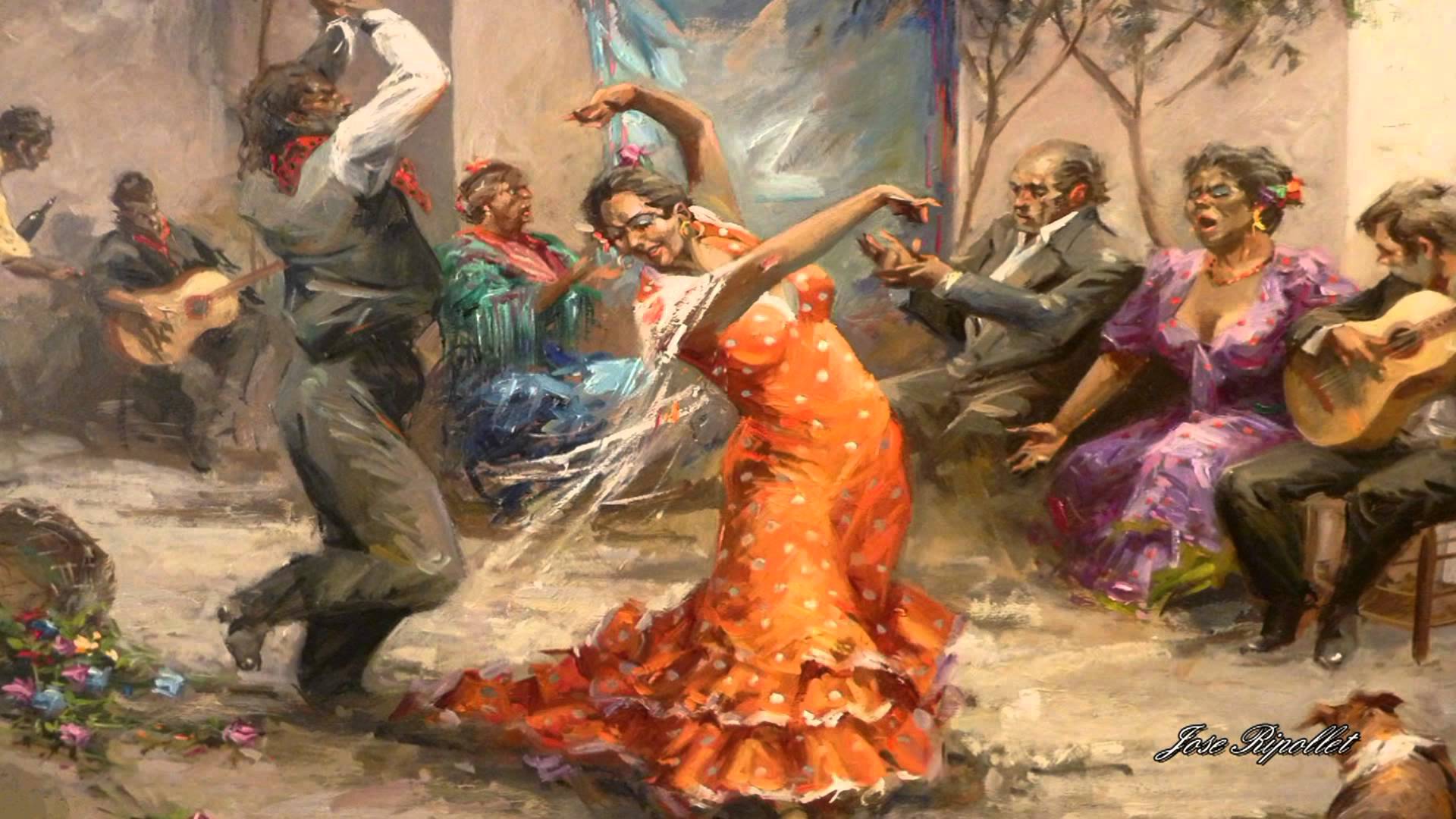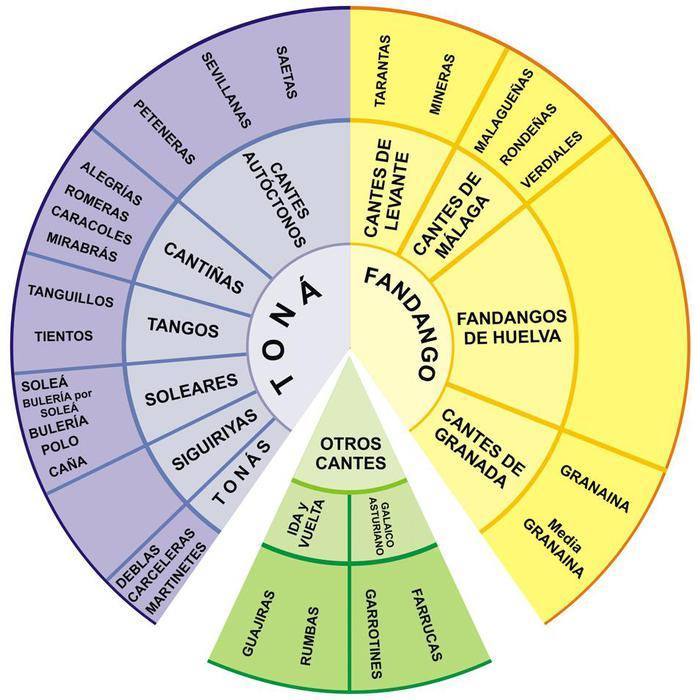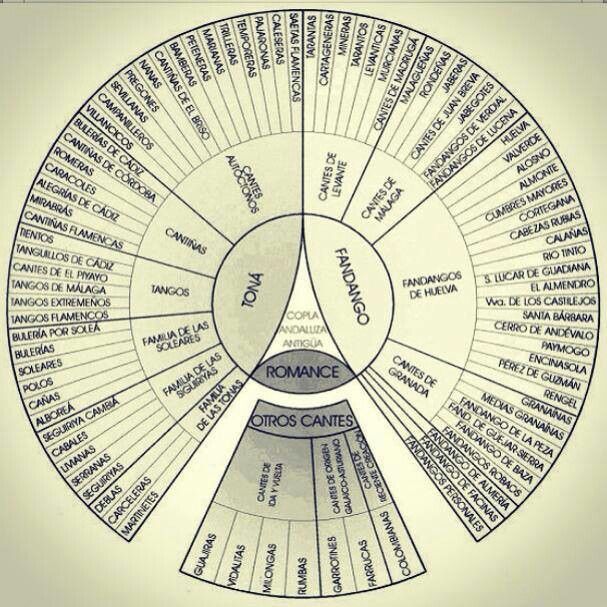flamenco
Cantiñas
Generic name given to the songs and dances from the fruitful province of Cádiz, such as alegrías, romeras, mirabas and caracoles.

It is said that cantiñas derive from the jota that was sung in Cádiz in the beginning of the XIX century. From this jota baturra, that the people from Aragon left when they had to emigrate to Andalusia during the Napoleonic wars to fight, were born these songs from Cádiz, which didn’t start having a solid form until the las quarter of the XIX century according to experts.
Caracoles
This style recalls of the proclamations of the street vendors of the Andalusian villages. It is a variation of the alegrías which reminds to Cádiz even if it seems that since the beginning of the XX century the singers from Madrid leaved their essence in them too. In 1950 the dance of caracoles appeared in the programme of the Pilar López’s ballet. This sing, according to Pilar López, was completely forgotten. The Niño de las Marianas, father of the guitarist Luis Maravillas, showed it to Ramón de Loja, who was the singer that joined the company of Pilar López when she had the idea of such a suitable choreography.
Mirabras
It is said that the sing mirabrás was created in Sanlúcar de Barrameda by José el Granaíno, also known as José el de Sanlúcar, specialist in sings from Cádiz. The etymological origin of the word mirabrás according to some (but not all) treatise writers comes from a degeneration of “mira y verás” (come and see). This variation that has the same accompaniment and rhythm of alegrias is a singing that requires a lot of skill and knowledge. It is not very deep but if the Mr. Antonio Chacón sings them it turns into a singing which incites dancing. Other performers of this variety were: Paco el Gandul, El Negro de Rota, El Tiznao, and Pericón de Cádiz.
This style recalls of the proclamations of the street vendors of the Andalusian villages. It is a variation of the alegrías which reminds to Cádiz even if it seems that since the beginning of the XX century the singers from Madrid leaved their essence in them too. In 1950 the dance of caracoles appeared in the programme of the Pilar López’s ballet. This sing, according to Pilar López, was completely forgotten. The Niño de las Marianas, father of the guitarist Luis Maravillas, showed it to Ramón de Loja, who was the singer that joined the company of Pilar López when she had the idea of such a suitable choreography.
Mirabras
It is said that the sing mirabrás was created in Sanlúcar de Barrameda by José el Granaíno, also known as José el de Sanlúcar, specialist in sings from Cádiz. The etymological origin of the word mirabrás according to some (but not all) treatise writers comes from a degeneration of “mira y verás” (come and see). This variation that has the same accompaniment and rhythm of alegrias is a singing that requires a lot of skill and knowledge. It is not very deep but if the Mr. Antonio Chacón sings them it turns into a singing which incites dancing. Other performers of this variety were: Paco el Gandul, El Negro de Rota, El Tiznao, and Pericón de Cádiz.


It is said that Enrique el Mellizo created the alegrias, a variation we know derives from the soleá.
Romeras
This rhythm was created by the singer Romero el Tito, another famous artist of the end of the XIX century. The value of the romera was increased in the middle of the XX century thanks to Antonio el Chaqueta, Antonio Mairena, María Vargas, El Cholocate, Chano Lobato and El Sordera. It is possible that this singing has the name of a flamenco singer named La Romera, a beautiful and enigmatic woman with a turbulent life as her colleague La Peternera who also passed away tragically.
This rhythm was created by the singer Romero el Tito, another famous artist of the end of the XIX century. The value of the romera was increased in the middle of the XX century thanks to Antonio el Chaqueta, Antonio Mairena, María Vargas, El Cholocate, Chano Lobato and El Sordera. It is possible that this singing has the name of a flamenco singer named La Romera, a beautiful and enigmatic woman with a turbulent life as her colleague La Peternera who also passed away tragically.
La Bahía de Cádiz, Camarón de la Isla (Alegría)
El barquito de vapor
esta hecho con la idea
que en echandole carbon
navegue contra la marea.
The steam boat
is made with the idea
if you add coal
it will sail against the tide.
Alegrías
No one can doubt that the alegrías have been and are the most widely known sing of Cadiz. Alegría means joy, party, happiness, fun; every tale defines the happiness of the people from Cadiz. First, only the women danced alegrías in the singing cafés and then, also the men: Miracielos, producer of Las Rosas; El Raspao; El Jorobao de Linares; Antonio el de Bilbao along with José Sánchez El Estampío, announced as the best Spanish alegrías dancer. These were the flamenco dancers who stood out in this variety. El Estampío, opened a school in Madrid and restructured it, creating a pattern which was followed by all the flamenco dancers of the golden time of dance.
No one can doubt that the alegrías have been and are the most widely known sing of Cadiz. Alegría means joy, party, happiness, fun; every tale defines the happiness of the people from Cadiz. First, only the women danced alegrías in the singing cafés and then, also the men: Miracielos, producer of Las Rosas; El Raspao; El Jorobao de Linares; Antonio el de Bilbao along with José Sánchez El Estampío, announced as the best Spanish alegrías dancer. These were the flamenco dancers who stood out in this variety. El Estampío, opened a school in Madrid and restructured it, creating a pattern which was followed by all the flamenco dancers of the golden time of dance.
